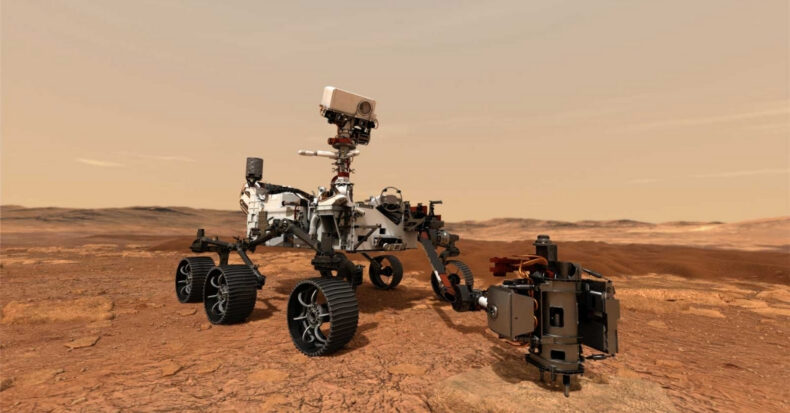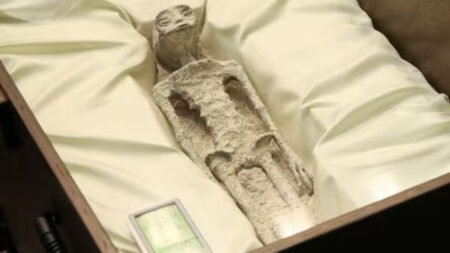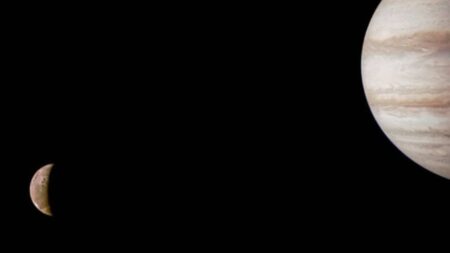National Aeronautics and Space Agency (NASA) added yet another feather to its cap on Monday, as its Perseverance rover scooped up and extracted its first rock sample on Mars. Mission controllers at NASA’s Jet Propulsion Laboratory (JPL) in Southern California unveiled the news.
This marks a significant feat in NASA’s Mars Exploration Program, which aims to comprehensively study the red planet’s geography and ecology. Initially, NASA was a tad uncertain of whether the rover had adeptly grasped the cargo hold or not, owing to preliminary images being of poor quality.
The Martian rock, which was a core from the Jezero Crater is “slightly thicker than a pencil.”
It is planned that a future expedition, namely the Mars Sample Return Campaign, would be led jointly by NASA and European Space Agency (ESA) for proper retrieval which would enable in-depth study by the scientists.
Thomas Zurbuchen, the associate administrator for science, has equated this success to that of the Apollo Moon missions which yielded similar results for the Moon.
He says that he’s hopeful of “jaw-breaking” new discoveries using “sophisticated” and advanced scientific instruments which could even delve into the question of whether life is sustainable on Mars or not.
Maiden Exploration
On September 1, the rover’s robotic arm started drilling percussively into a flat rock coined as “Rochette.” Following this coring process, Perseverance’s arm manoeuvred the arm, bit and sample tube so that its MastcamZ camera setup could picture the sample (which was unsealed at the point) and transmit the results to Earth for confirmation.
After confirmation and gathering the sample, it was analyzed by the rover’s interior for imaging and measurements and then hermetically sealed within an airtight titanium tube.
Bill Nelson, NASA Administrator, and Larry D. James, the incumbent interim director of JPL, expressed pride in the achievement. They commended the team of academicians, scientists, industry partners, international space agencies for their support and willingness to ambitiously set goals and achieve targets flawlessly.
The Sampling & Caching System in this mission has over 3,000 parts and is the most complex piece of machinery that has ever been sent to uncharted waters of space, Mr James added.
Upcoming Plans
Perseverance had been flagged off on July 2020 by the Atlas V Launch Vehicle and landed successfully on 18 February 2021.
As of now, both the Perseverance rover and the first helicopter to operated on the Martian atmosphere, Ingenuity have endured 195 sols (sol signifies one Martian day) which is equivalent to 201 Earth days.
It is now actively exploring the rugged landscape and boulders of “Artuby”, which is essentially a ridgeline spanning 900 metres and in the proximity of the Jezero Crater.
The common belief is that this region has the planet’s most vintage and antiquated collection of bedrock, which can help understand Mars’ geography much better.
The rover’s initial phase of the probing will be over once it reaches its initial landing site.
The proposition is to travel north and then venture west on to delta region.
It is speculated that the delta region might be a spot where there was a confluence of an ancient river with a lake, which could spell possibilities of ancient clay minerals being buried there too.
Typically, on Earth, this has enormous importance to ascertain the presence of fossilized life of primaeval microbic beings.
The key objective of this mission further is aligned to study its astrobiology, as is evident from the proposal to unearth the deltaic remains, which will veer into the question of the existence of life on Mars.
The Mars 2020 marks a development of paramount prominence undertaken by NASA, after several past endeavours to know more about the red planet. NASA has affirmed that this mission is in line with its Artemis mission for Moon, and both entail the objective of human exploration.
Presently, the U.S, Russia, China, India , U.A.E. & European Space Agency have been successful in sending orbiters and as of now, only the U.S. & China have been able to land and operate the rover.













